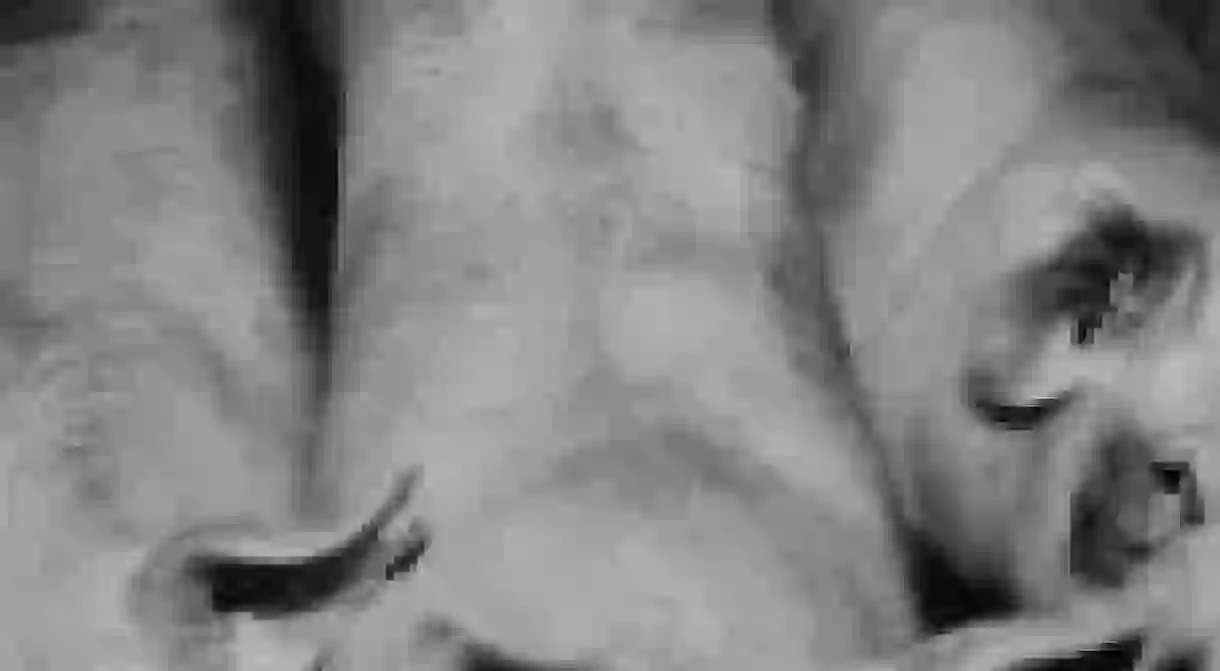Michael Schmidt: Germany’s Prix Pictet Photographer

Michael Schmidt, winner of the 2014 Prix Pictet, is one of the most important photographers of the 20th century, not only in his native Germany. Using a slow-burn approach to documentary photography, he creates a new visual lexicon for every series he works on, whether it is Berlin streetscapes or European farmland. Schmidt’s unblinking realism is already influencing Europe’s next generation of photographers.

‘… I always stroll straight into a cul-de-sac and can’t find a way out. Then I come to terms with this as a sort of condition and at some point later on, I’m back on the outside again. […] That is to say, failure or making mistakes is an integral part of my way of working.’ With these words, German photographer Michael Schmidt described his creative process.
One of the most influential, social-documentary photographers of the post-war period, in 2014 Schmidt was awarded the prestigious Prix Pictet, which aims at recognizing outstanding photography in relation to contemporary environmental issues. The theme for the fifth Prix Pictet was Consumption, for which photographers were asked to work around the issue of environmental sustainability. In his last work, the series Lebensmitte, the Berlin-born photographer investigated the way people feed themselves by exploring the processes behind the European food systems from farms to people’s homes.
As for his previous works, Schmidt worked within the frame of a series or book, in which each photograph carries its own meaning and existence but it gains an added, broader meaning when put together with other images as if to create a photographic language, completely free from accompanying written texts.

Schmidt’s approach is investigatory and documentary; he spent seven years researching and shooting farms, factories, farm animals, packaging, and food. He carefully drafted and planned his projects, but despite this meticulous planning, the outcome and completion are still unknown and therefore could fail, an aspect that the artist came to accept as an intrinsic element of the creative process.
It is perhaps because of this acceptance of making mistakes that each of his series is quite distinct from the others and finds its own unique communicative figurative language. For each series, he looked for a new angle, a further way to represent and capture his topics, making it hard to typecast his work, an aspect that might explain why his works have not reached as widespread an audience as they deserved.
Schmidt let his subjects resonate and speak for themselves by applying both a realistic and an impeccable pictorial style which documents social and environmental themes. Schmidt studied painting and later taught himself photography, and his artwork mirrors the aesthetic of both disciplines together. Although at first glance his pieces may appear bleak and desolated, mainly due to his predilection for grey monochromatic photos, he is not judging or accusing but simply revealing what he explores.
By rejecting the photographic concept of the ‘decisive moment’, his style avoids superficiality, favoring a ‘straight’ approach to the subject at hand; the colors of the world are intentionally removed and replaced by a broad range of grays.
‘…gray is my color. There are thousands of gray gradations. Black and white are always the darkest and the lightest gray.’

Since he started taking pictures in 1968, he has focused most of his interests on the city in which he was born and spent his life, Berlin. Waffenruhe, probably one of his best works, is a series of black and white images showing the landscapes, people and the architecture of Berlin just a few years before the fall of the Wall. He depicts a city that is isolated in decay, and its people with it.
Previously, between 1976 and 1980, he documented the architecture of Berlin with its austere residential buildings and offices, culminating in the series Berlin Stadtbilder. The value of Schmidt’s work does not only rely on its importance as documents, but also on the social realities that echo and resonate in capturing Berliners at particular socio-historical moments.
The dichotomy between a newly born Berlin and the weight of its past resurfaces in EIN-HEIT (U-nit-y, 1991- 94), a collection of Schmidt’s own photographs and clips from magazines, newspapers and propaganda pamphlets. The result is a poetic and symbolic composition of collective and individual memories about German reunification that nonetheless resonate universally and go beyond specific time and place.
What characterizes the German photographer’s books is the power of evocation that his photographs carry with them, by offering insights on historical or social realities. However, he challenges the viewers to dive into their individual emotions in relation to the themes presented and to dig through the layers hiding behind his subjects.
Through his career, Schmidt placed himself as an influential artist within the photography world due to his atypical way of developing projects, his documentary approach and his anachronistic decision to distance himself from the ‘decisive moment’ and instead create a visual language flowing from a collection of photos.
Michael Schmidt died this year at the age of 68 after a long illness.
By Silvia Buonpadre













